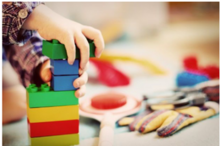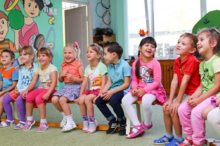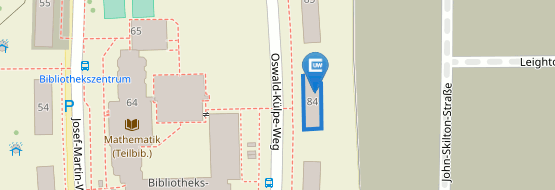Research
Further translations are in progress.

SI-Project
Study to investigate the correlation between diagnosed language problems and sensory integration
“Sensory integration” (SI) plays a central role in a child's overall development. It enables incoming sensory stimuli from the environment to be organized, linked and interpreted. In the course of life, more and more sensory experiences are “sensory integrated”, allowing the body to be used effectively in the environment and experiences to be used to learn new things. It has already been scientifically proven that an imbalance in the perception and processing of the different sensory systems impairs our ability to process new stimuli and influences our behavior and our ability to learn. The role that sensory integration plays in children's language development and in connection with various language problems has been little researched to date. In our study, we will work with experienced SI therapists and various cooperating speech therapy practices to investigate possible links between sensory integration and language development in children between the ages of three and seven who are currently undergoing speech therapy treatment. This enables us to better understand factors influencing language development and, in the long term, to draw important conclusions for successful speech therapy.
Project term: since 2023
Project leader: Sabine Rüdenauer und Dr. Simone Schäffner
Cooperating SI-Therapists: Katja Ebeling and Caroline Staib
Student assistants: Pia Schäffner und Johanna Weissgerber
ModaKiS

Language processing often requires a combination of auditory, visual, vocal and manual information processing. More precisely, speech can be perceived auditorily or visually (input-modality) and produced vocally or manually (output-modality). Successful communication usually requires a combination of input and output modalities. Studies show that the way in which input and output modalities are combined has a decisive influence on language processing - especially when switching between modalities. Switching between compatible modality combinations (i.e. auditory-vocal and visual-manual) is faster and less error-prone than switching between incompatible combinations (i.e. auditory-manual and visual-vocal). Previous findings on modality compatibility effects are limited to adults. In this project, the effects of modality compatibility in children and possible correlations with language development will be investigated for the first time.
| Project term: | 11/2022 - 10/2025 | |
| Project leader: |
| |
| Project member: | Vera Wolfrum | |
| Project funding: | The project is funded by the German Research Foundation and is part of the DFG priority program "Visual Communication. Theoretical, empirical and applied perspectives ( ViCom )". | |
| Further information: | GEPRIS |
Research Project 'Starke Stimme Macht Schule'
![[Translate to Englisch:] Logo des Forschungsprojekts 'Starke Stimme Macht Schule'](/fileadmin/_processed_/2/5/csm_2FCA3E15-B196-44DA-BAD2-C5399C230C76_4_5005_c_b3fd9411b1.jpeg)
The objective of STARKE STIMME macht SCHULE is a substantial contribution to maintaining healthy vocal performances in future special needs teachers. There are many risk factors for developing a voice disorder in teachers, for example the neglect of mandatory preventive interventions during teacher training (Lemke 2012, Puchalla et al. 2013, Meuret 2017, Ohlsson et al. 2019). Studies show the probability of experiencing voice disorders is higher for teachers who showed vocal problems as a teacher student (de Jong et al. 2006, Kooijman et al. 2006, Ohlsson et al. 2012). These assertions consequently call for the sustainable implementation of voice prevention programs during teacher training (Hammann 2004, Lemke et al. 2006, Voigt-Zimmermann 2010, Lemke 2012, 2020; Nusseck et al. 2019). The results of studies trying to assess the effectiveness of voice prevention in student teachers are heterogeneous (Duffy & Hazlett 2004, Timmermans et al. 2011, Ohlsson et al. 2016). Evaluation of long-term preventive outcomes is therefore a major concern of research. To contribute, a longitudinal study aims to assess the voice prevention program STARKE STIMME macht SCHULE.
| Project term: | running since 2016 |
| Project leader: | Dr. Anne Jurkutat |
| Project members: | Kathrin Heeg, Dr. Fabian Kraus, André Grandl |
Publications:
Jurkutat, A., Götz, R., Heeg, K., Kraus, F., Grandl, A. & Hansen D.M. (2021). Prävention von Stimmstörungen im Lehramtsstudium – Möglichkeiten und Grenzen einer Konzeptimplementierung im Studienverlaufsplan. Logos. Advanced online publication.
https://www.prolog-shop.de/media/pdf/6b/ff/c4/IMPULSE-Jurkutat-et-al-online1-s1.pdf
Curriculum-based Measurement
The project deals with methods of curriculum-based measurement in the area of reading and reading promotion for children in the first and second grades at a speech therapy school. On the one hand, the aim is to improve the reading performance of the children in care from as early a stage as possible and to train the participating student teachers in the methods used. The project also results in support for teachers and the validation of the methods used using standardized test procedures.
Project term: since 2014
Project leader: Dr. Claudia Stock
In collaboration with: Maria-Stern-Schule Würzburg
Publications:
Stock, C. (2022). Informelle Lernverlaufsdiagnostik im Rahmen eines Lesetrainings bei Kindern einer Sprachheilschule. In M. Gebhardt, D. Scheer & M. Schurig (Hrsg.), Handbuch der sonderpädagogischen Diagnostik. Grundlagen und Konzepte der Statusdiagnostik, Prozessdiagnostik und Förderplanung (S. 805‐828). Regensburg: Universitätsbibliothek. https://doi.org/10.5283/epub.53149
IkoGeWo – Iconic gestures as a method to effectively convey unknown words in inclusive settings

The aim of the project is to examine the use of gestures, with a high degree of iconicity, i.e., very pictorial gestures (iconic gestures), for teaching novel words in inclusive day-care facilities and primary schools. In particular, we examine the effect of gestures in children with difficulties in communication and language acquisition (developmental language delay, developmental language disorder, no or less knowledge of German).
The frequently expressed fear that the presentation of gestures or signs when learning novel words could hinder the acquisition of unknow words or the word learning process (c.f. Goodwyn, Acredolo & Brown, 2000) has now been clearly refuted (i.a. Capone & McGregor, 2005; Capone Singleton, 2012; Goodwyn et al., 2000; McGregor, Rohlfing, Bean & Marschner, 2009).
On the contrary, iconic gestures seem to act as a semantically enriched hint (Capone Singleton, 2012; Lüke & Ritterfeld, 2014), thus deepening the semantic representation of a novel word in the mental lexicon (c.f. Levelt, 1989), which has a positive effect on the acquisition process of the novel word.
| Project term: | 12/2018 – 02/2023 |
| Project leader: | Prof. Dr. Carina Lüke |
| Project members: | Nathalie Frey und Verena Frank |
Project funding: The project / research is funded by the (German) Federal Ministry of Education and Research (01UL1811X)
Mottier Research Project

The „Mottier-Test“ (Mottier 1951) is used in German-speaking areas to examine the auditory processing span as much as the phonological working memory performance and is often part of diagnosing developmental language disorders. So far there are no standard values regarding mono- and multilingual children at the age of 3 to 4 years, and the standardisation of the Mottier-Test for this age group is the subject of a study conducted in Würzburg, Germany by the Professorial Chair of Speech and Language Pathology under Prof. Dr. Carina Lüke in cooperation with Prof. Dr. Anja Starke of the University of Bremen. Further methodical issues are being assessed in a collaboration with Maren R. Eikerling and Theresa Bloder.
| Project leader: | Prof. Dr. Carina Lüke und Prof. Dr. Anja Starke |
| Project members: | Kathrin Heeg & Nathalie Frey |

